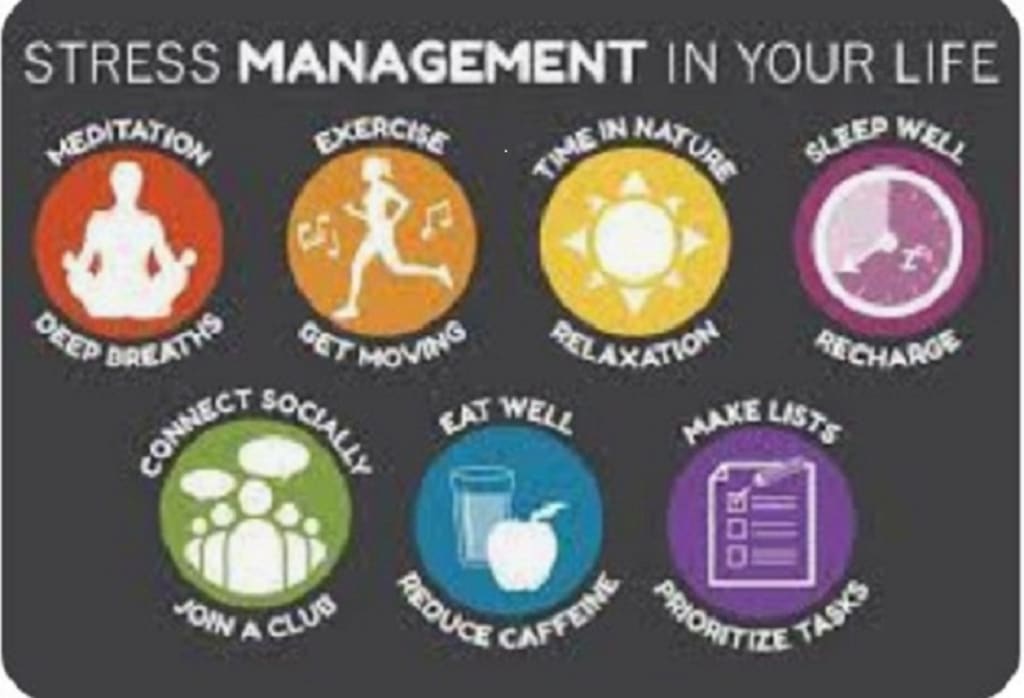Mental health and stress management techniques.
Understanding and Managing Anxiety: Coping Strategies for a Stressful World

Mental Health and Stress Management: 10 Step-by-Step Guide to Finding Balance and Inner Peace
Introduction: In today's fast-paced world, stress and mental health issues have become increasingly prevalent. Taking care of our mental well-being is just as important as maintaining physical health. In this comprehensive guide, we will explore step-by-step techniques and strategies to manage stress effectively and nurture mental health.
Step 1: Recognize the Signs of Stress The first step in managing stress is to recognize the signs and symptoms. These can vary from person to person but may include irritability, anxiety, difficulty concentrating, changes in appetite or sleep patterns, and physical manifestations like headaches or muscle tension. By identifying these signs, you can take proactive measures to address them.
Step 2: Practice Self-Care Self-care is essential for maintaining good mental health. It involves engaging in activities that promote relaxation and rejuvenation. This can include taking regular breaks, engaging in hobbies or interests, spending time with loved ones, and prioritizing quality sleep. Remember, self-care is not selfish but rather a vital component of overall well-being.
Step 3: Cultivate Mindfulness Mindfulness is the practice of being fully present in the moment and non-judgmentally aware of your thoughts and feelings. It can help reduce stress and increase self-awareness. Incorporate mindfulness techniques into your daily routine, such as deep breathing exercises, meditation, or mindful walking. These practices can help you stay grounded and focused, even in challenging situations.
Step 4: Manage Your Time Effectively Time management plays a crucial role in reducing stress. Start by identifying your priorities and setting realistic goals. Break tasks into manageable chunks and create a schedule or to-do list to stay organized. Remember to allow yourself downtime and avoid overloading your schedule. Learning to say "no" when necessary is essential for maintaining balance.
Step 5: Establish Healthy Boundaries Setting boundaries is vital for protecting your mental health. Learn to recognize and communicate your limits, whether it's with work, relationships, or social commitments. Prioritize your needs and learn to say "yes" to yourself. Respect your own boundaries and assert them confidently, knowing that your mental well-being is a priority.
Step 6: Engage in Regular Exercise Physical activity is not only beneficial for your physical health but also for your mental well-being. Engage in regular exercise, whether it's walking, jogging, yoga, or any other activity you enjoy. Exercise releases endorphins, which are natural mood boosters, and helps reduce stress levels. Aim for at least 30 minutes of moderate exercise most days of the week.
Step 7: Build a Support Network Having a support network can significantly impact your mental health. Surround yourself with positive and supportive individuals who uplift you. Reach out to friends, family, or even seek professional help when needed. Remember, seeking help is a sign of strength, and there are resources available to assist you on your journey towards better mental health.
Step 8: Practice Positive Thinking Positive thinking can help reframe negative thoughts and reduce stress. Challenge negative self-talk and replace it with positive affirmations. Surround yourself with positivity by reading inspiring books, listening to uplifting music, or engaging in activities that bring you joy. The power of positive thinking can have a profound impact on your mental well-being.
Step 9: Seek Professional Help If you find that stress and mental health issues are significantly impacting your life, it's essential to seek professional help. Mental health professionals, such as therapists or counselors, can provide guidance and support tailored to your specific needs. They can help you develop coping strategies and provide a safe space to express your thoughts and emotions.
Step 10: Practice Gratitude Gratitude is a powerful tool for managing stress





Comments
There are no comments for this story
Be the first to respond and start the conversation.